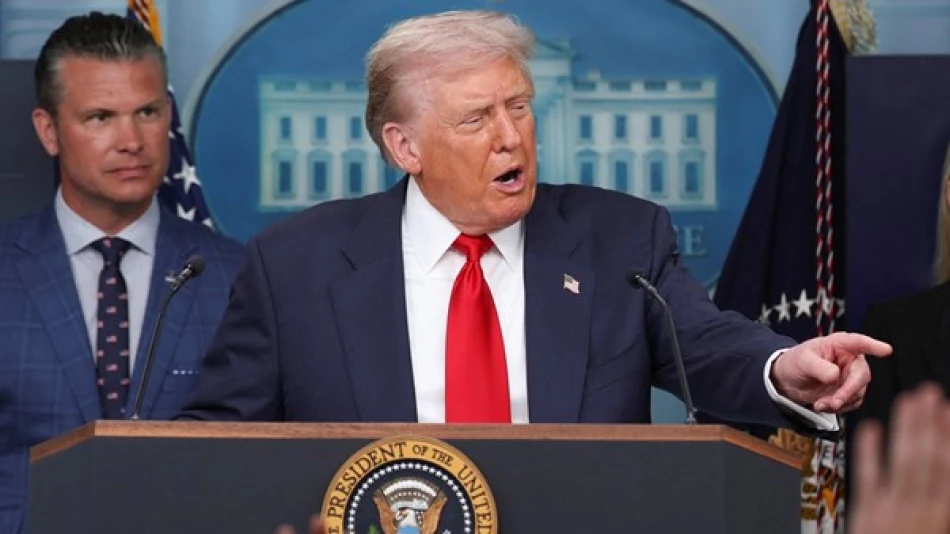
Trump Extends Tariff Suspension on Chinese Imports, Easing Trade Tensions
Trump Extends China Tariff Truce as Trade War Takes Backseat to Domestic Priorities
President Donald Trump has signed an executive order extending the suspension of high tariffs on Chinese goods for another 90 days, pushing the trade war resolution further down the road as his administration focuses on other policy priorities. The move prevents what could have been a significant market disruption and signals that both economic superpowers may be seeking a more measured approach to their ongoing commercial disputes.
A Strategic Pause in Economic Warfare
The tariff suspension, originally set to expire Tuesday at 04:01 GMT, represents a continuation of the temporary truce that has been in place since May. This extension comes after a year of escalating trade tensions that saw the world's two largest economies impose billions of dollars worth of retaliatory tariffs on each other's goods, creating uncertainty across global supply chains and financial markets.
The Trump administration had previously hinted at the possibility of extending the deadline, suggesting that both sides recognized the need for more time to navigate their complex economic relationship without the immediate pressure of punitive trade measures.
Market Implications and Investor Relief
For investors and global markets, this extension provides much-needed stability during a period already marked by significant policy uncertainty. The original tariff escalation had created substantial volatility in sectors ranging from technology to agriculture, with companies forced to restructure supply chains and absorb increased costs.
The 90-day extension offers several key benefits:
• Prevents immediate price increases on consumer goods heading into the spring retail season
• Allows multinational corporations more time to adjust their operational strategies
• Reduces short-term market volatility that could have emerged from renewed trade tensions
Historical Context: A Pattern of Extensions
This approach mirrors similar strategies employed by previous administrations when dealing with complex international trade disputes. The pattern of temporary truces followed by extensions has become a common diplomatic tool, allowing both sides to maintain negotiating positions while avoiding immediate economic disruption.
The current situation echoes trade negotiations between the US and other major partners, where deadline extensions have often preceded either significant breakthroughs or fundamental shifts in approach. However, unlike previous trade disputes, the US-China relationship involves far more than commercial considerations, encompassing technology transfer, intellectual property rights, and broader geopolitical competition.
What This Means for Global Trade
The extension suggests that both Washington and Beijing may be recalibrating their trade strategies, potentially moving away from the aggressive tariff-based approach that characterized much of the previous negotiations. This shift could indicate a recognition that the economic interdependence between the two nations makes sustained trade warfare counterproductive for both sides.
For other trading partners, this development reduces the risk of being caught in the crossfire of US-China trade tensions. Countries like those in Southeast Asia and Europe, which had been forced to navigate the complex dynamics of the trade war, now have more predictability in their own trade relationships with both superpowers.
The 90-day timeline also provides a window for both sides to explore alternative frameworks for managing their economic relationship, potentially moving toward sector-specific agreements rather than comprehensive trade deals that have proven difficult to negotiate and implement.
Most Viewed News

 Layla Al Mansoori
Layla Al Mansoori






